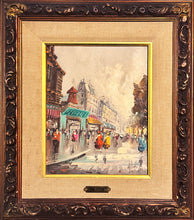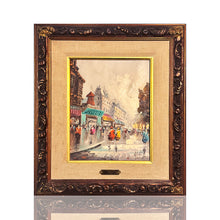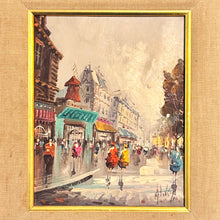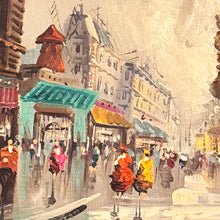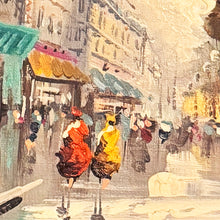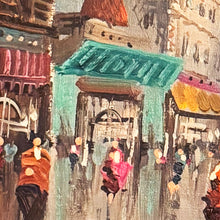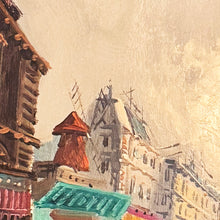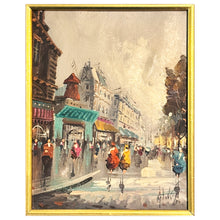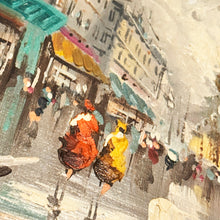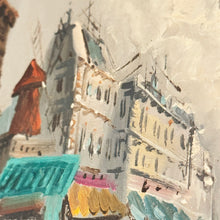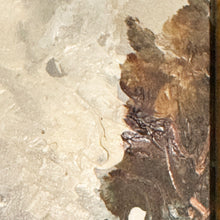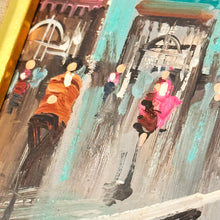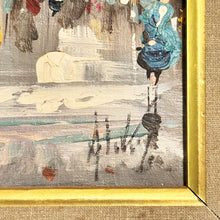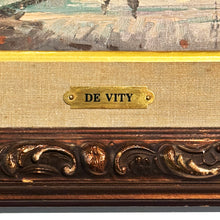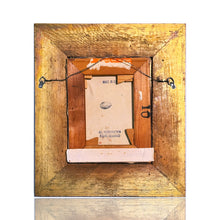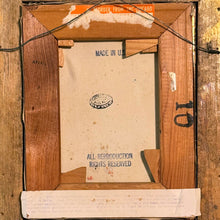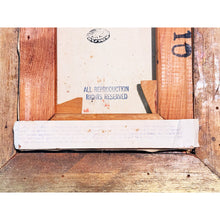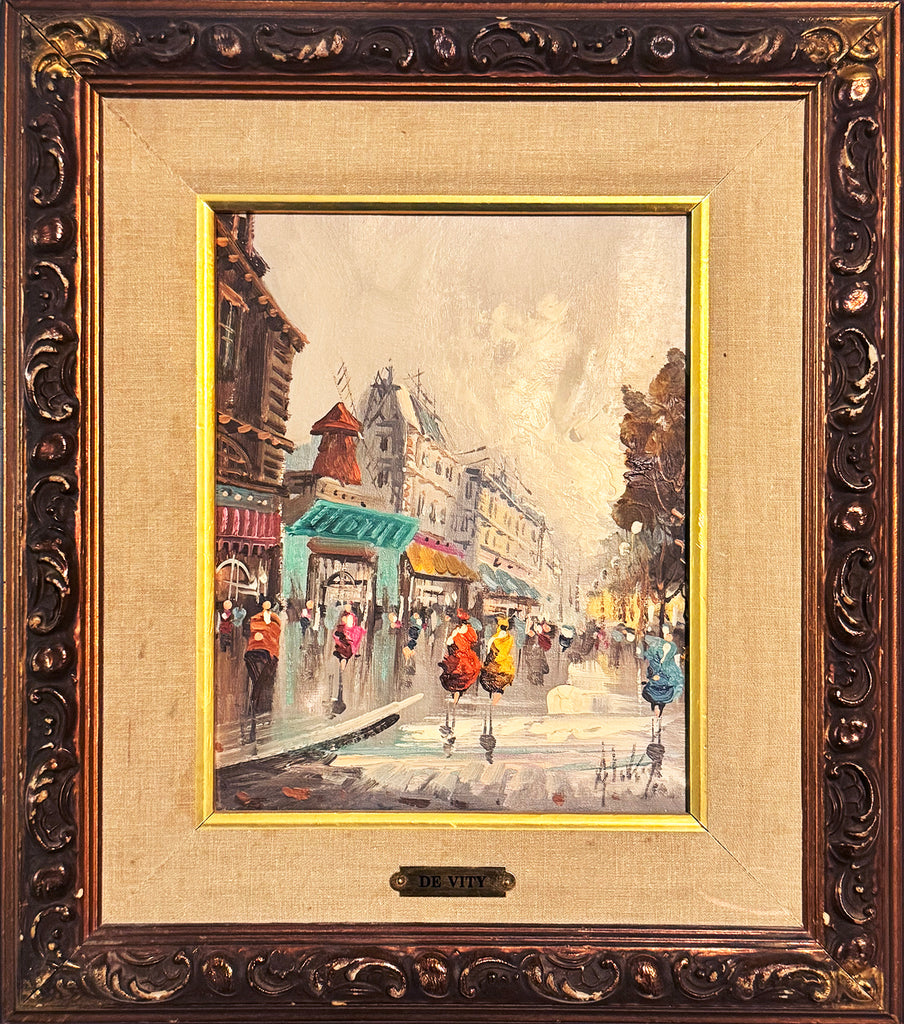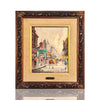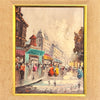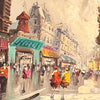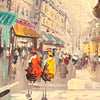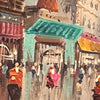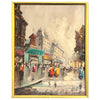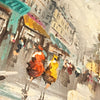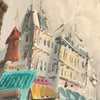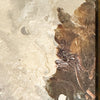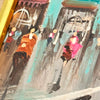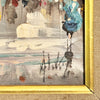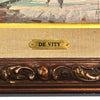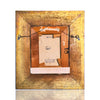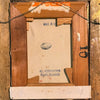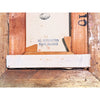'Paris Street Scene 1 (Untitled)' by Antonio DeVity c. 1950-60's.
Rare original painting on canvas of a pre-war Paris scene.
10 x 8 Inches
25.4 x 20.3 Centimeters
16.6 x 14.6 x 1.7 Inches (framed)
Hand-painted oil on cotton canvas.
Original artwork (#1/1).
Hand-signed by the artist in black paint, bottom right.
*Note: Original custom framing with gold fillet and antique, ornate golden-bronze wood molding.
*Note: Vintage framing shows signs of age/handling. Original artwork is very good. See photos.
ARTIST BIO
Antonio DeVity (born Umberto Marone, 1901-1993) was an Italian painter whose vibrant cityscapes became beloved for their atmospheric charm and lyrical use of color. He was born in Southern Italy (Reggio-Calabria or Naples, depending on the source) and grew up in a family where art was part of his early life—his father was a painter in Naples, and this environment nurtured his budding talent. He studied at the Liceo d’Arte in Naples and later spent time in Rome, where he is said to have come under the influence of or studied with the Futurist painter Giacomo Balla. With strong foundations in technique and an early appreciation for urban beauty, DeVity’s path was set to become one of light-filled streets, rain-drenched pavements and the distinctive silhouettes of Parisian boulevards and Venetian canals.
In the 1920s and ’30s he moved to Paris and embraced the city that would dominate his palette and subject matter. He lived in a modest attic near Place Saint-Michel, and the cafés, bridges, horse-drawn carriages, cafés and lamplit boulevards of Paris became recurring motifs in his paintings. It was during this period that he adopted the professional name “Antonio DeVity” in homage to the city he admired—“De Vity” evoking the Parisian vitality he translated into paint. The intense light, wet streets and atmospheric reflections found in his work reflect both the real Paris he observed and a poetic reinterpretation of urban life.
Returning to Naples in the mid-20th century, DeVity established a studio that soon became a significant art-school hub for Southern Italian painters. He opened the “Studio d’Arte A. DeVity” where aspiring artists came to learn his techniques of palette-knife work, textured oils and impressionistic city-view compositions. Through the 1950s and ’60s his work gained international visibility through exhibitions in Brussels, Marrakech, Madrid and beyond. His canvases—characterised by thick impasto, glimmering surfaces and vivid reflection of light on cobbles and water—melded the sensuous quality of Impressionism with a disciplined sense of composition rooted in his academic training.
DeVity’s style is instantly recognizable: a palette of jewel-tones, shimmering wet surfaces, rain-soaked paving, glowing street-lamps and silhouettes of figures and carriages under umbrella skies. Whether depicting the Grand Canal in Venice or the Rue de Rivoli in Paris, his paintings convey movement, memory and mood. Though not formally aligned with any avant-garde movement, his early connection to Futurism (via Balla)—especially its interest in light, urban dynamism and texture—inflected his work with a subtle modernism. Over time his studio gained acclaim and his paintings entered private collections across Europe.
Antonio DeVity passed away in 1993, leaving behind a legacy of evocative city-scapes that continue to charm collectors with their romantic sensibility and technical assurance. Today his work offers a blend of nostalgia and refinement—a window into European streets as they once were, rendered with a painter’s affection for light, atmosphere and place.


















